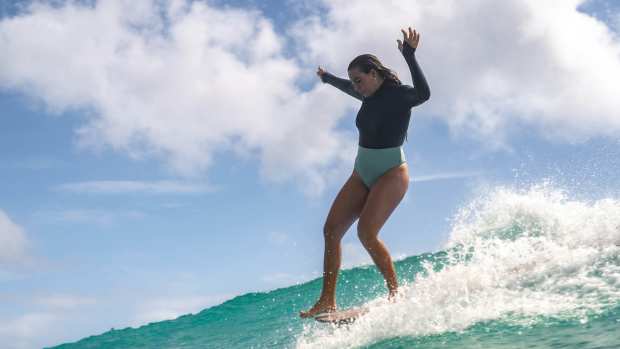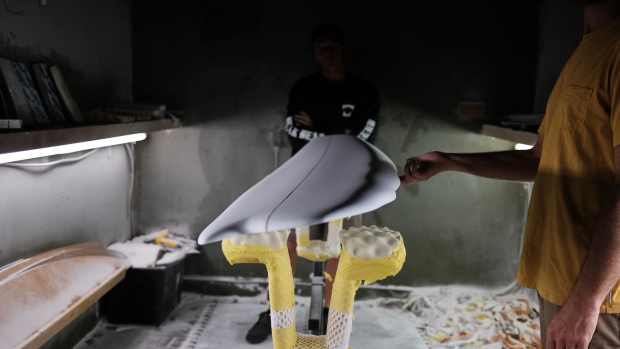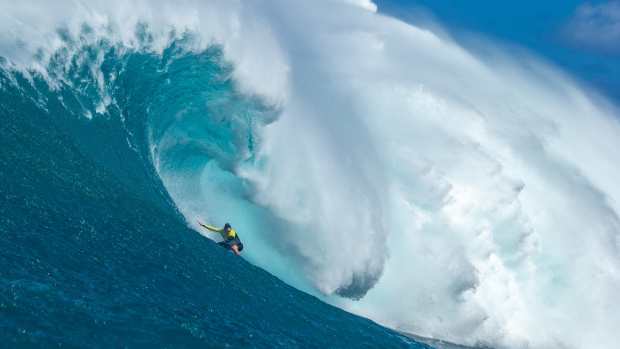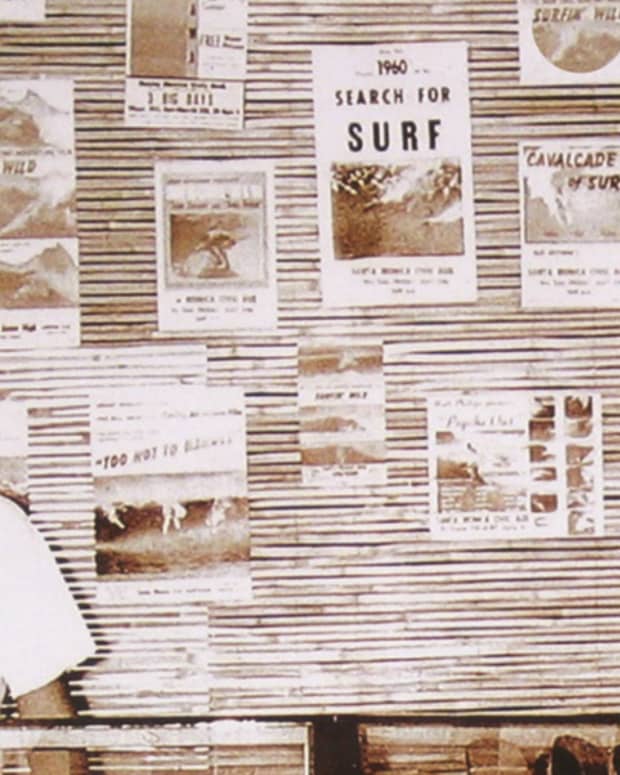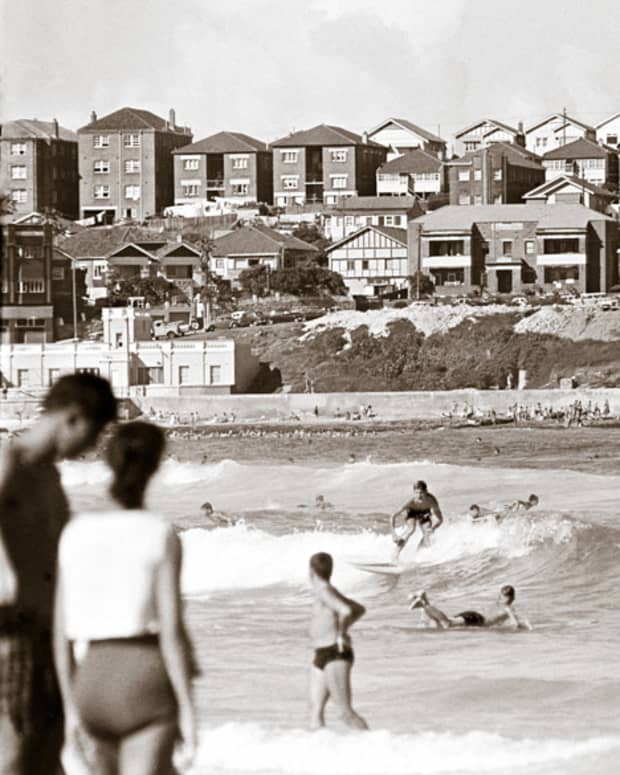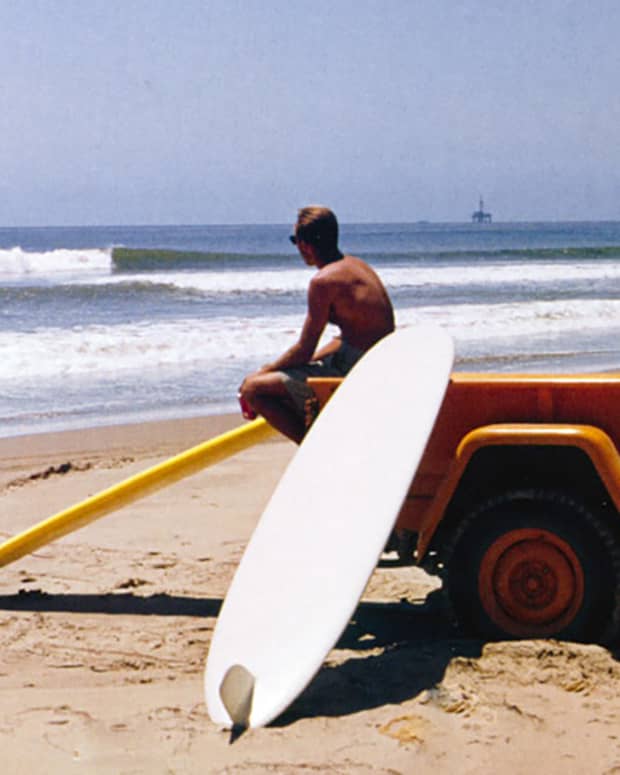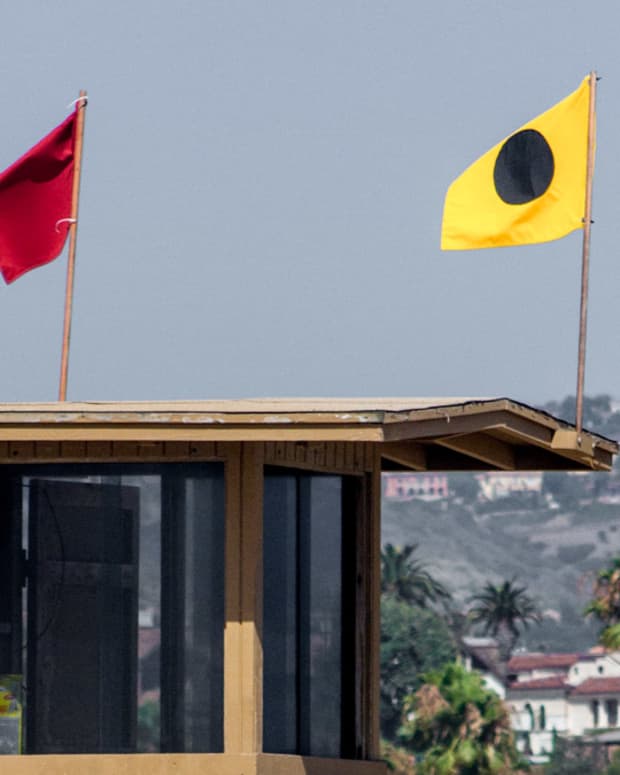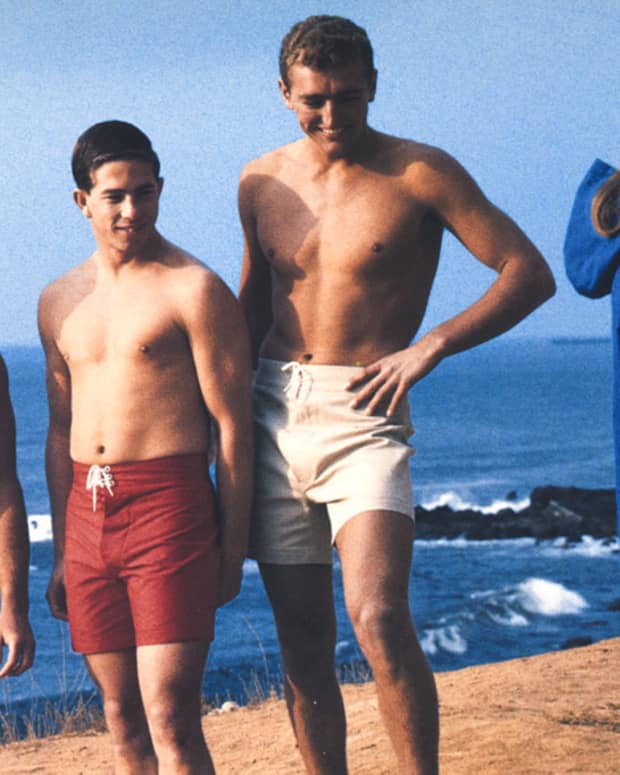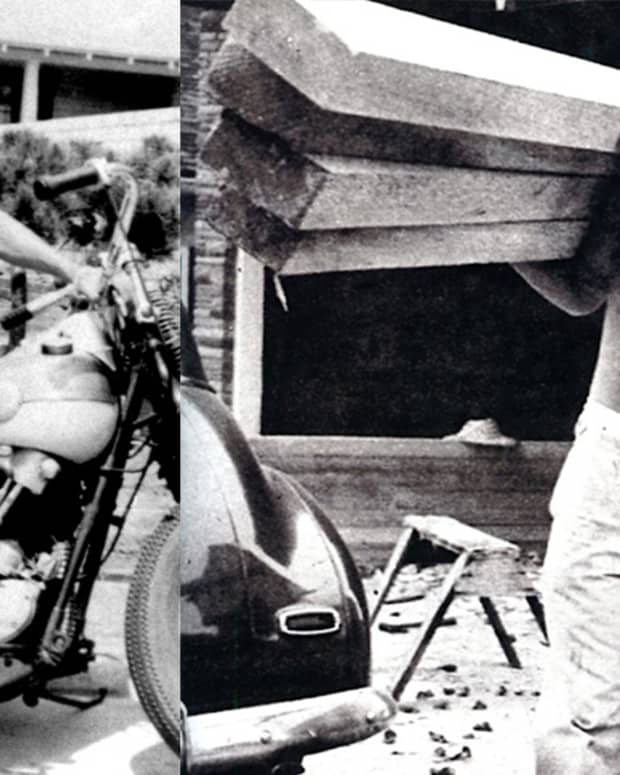History of Surfing: Destroying Amps in Five-Part Harmony
A musical soundtrack followed the influx of surf hysteria into the sport's boom period of the '60s. But West Coast jazz, then the score of choice from the mid- to late-'50s, tapped the toes of baby boomers for only so long before rock-and-roll became the new anthem at beaches from Santa Barbara to San Diego, and no instrumental music was more sought after than the smoldering guitar-work of Dick Dale, whose playing sent amps into flames, created what might be the defining "surf song" in Miserlou, and inspired a truly awful Black Eyed Peas song. Here's Matt Warshaw on Dale in the latest History of Surfing chapter:
Dale was a teenage guitar ace in the mid-'50s when he moved with his family from Boston to a Southern California beach town, where he began surfing. He loved Duane Eddy’s thick echo-chambered guitar sound and the murderous chord progressions on Link Wray’s “Rumble.” But he also loved Nat King Cole, Hank Williams, and the Middle Eastern traditionals that his Lebanese-born father played. In the summer of 1961, Dale and his new backup band, the Del-Tones, played their first show at the Rendezvous Ballroom—a cavernous down-at-heels nightclub eight miles south of Huntington Pier. In better days, the Rendezvous had swung to the music of Benny Goodman, Tommy Dorsey, and Stan Kenton. But rock and roll, as far as city officials were concerned, was a public nuisance; two years earlier they’d shut the Rendezvous down altogether. Before Dale and the band could play there, Dale’s father had to convince the club’s new owners, then city permit officials, that his son was going to put on a “musical review,” not a rock and roll concert, and that they’d enforce a dress code for all who attended.
Dale got a handful of his surfing buddies to show up at the Rendezvous, and handed out cheap ties from a cardboard box to anyone who came without the requisite neckwear. For the opening 15 minutes of his show, Dale played songs like “Begin the Beguine,” while his friends dutifully sat and watched. Then he shifted gears and did two or three country numbers, then some R&B covers, and finally launched into some rock—which got everybody on their feet, clapping and cheering.
Then there was vocal music, popularized by groups like The Beach Boys and Jan & Dean. The groups climbed higher on the American pop charts than their instrumentalist contemporaries ever did, but their success was viewed with contempt by many in surfing's inner circle. More from Warshaw:
More than anything, surfers’ disregard for the Beach Boys and Jan and Dean came down to authenticity—or lack thereof. “I was riding in a car with a friend when we first heard ‘Surfer Girl,’” Los Angeles surfer and 1964 world championship finalist Mike Doyle once recalled. “It was this whiny, cornball music, and we stated hissing and hooting, saying ‘What a rip-off!’ Years later I realized how good the Beach Boys’ songs actually are. But at the time, it was like they were pretending they’d made it down the stairs at Malibu and were part of the crew—except they couldn’t even surf, and everyone knew it.”
[READ THE FULL HOS CHAPTERS HERE AND HERE. NOT A SUBSCRIBER YET? SIGN UP HERE.]
We asked Warshaw to give his highest falsetto on Dick Dale, the Beach Boys, and the union between surf and music.
Let’s start with a question for the present: how has the role of surf music changed since the boom period of the ‘60s? Does surf music shape surf culture?
“Surf music” is a dumb name, really. Or not dumb, sorry, that’s the wrong word. It’s just a placeholder. Apart from a few songs where the lyrics that are actually about surfing, the rest of it...I’m with Dick Dale here, it’s just “music.” It’s good or bad, fast or slow, heavy or soft. The best of that fantastic instrumental stuff that we call “surf music” is really just good, tough, stripped-down rock and and roll. “Misirlou” doesn’t make me think of surfing as much as it does a high-speed car chase on mushrooms.
But to answer your question, surf music doesn’t shape surf culture today, and I don’t actually think it shaped it even back when Dick was melting plaster off the walls of the Rendezvous Ballroom. Surfing maybe shaped the music, a little, but not the other way around. Surfers in the ‘60s listened to all kinds of stuff, like surfers do today. If I were going to name a single group who shaped surf culture, maybe just a tiny bit, it would be Santana, in the early and mid-‘70s. I think Bobby Owens once said that he always tried to surf the way Carlos Santana played guitar.
What was Dick Dale like as a performer?
Not at all surfy. Greased back, kinda Jersey Boy-looking, hard-ass but for sure, a sense of humor. Here, see for yourself!
I’ll be honest, for me, a lot of this kind of music all sounds the same. Same chords, same bouncy tone. What did Dale bring that was so different?
The strings on his guitar were thick as bridge cables, and he had incredible hand speed, and these big Popeye muscles on his fingers. So the sound he got was huge. I think of Dick’s guitar playing in the same way as John Bonham’s drum playing. Gigantic but nimble. It’s like he’s playing in 3D when everybody else is playing in 2D.
Dale didn’t like to tour outside of California, right? How much of his popularity — and the popularity of other instrumental groups — was because of his regional exclusivity?
I never really understood that. He played at the Ed Sullivan Show in New York, and got a good reception there, so he was capable of travel. I’ve read, or my guess is, that he just didn’t really like being away from Newport Beach, and Southern California. Then again, Dick seems so ambitious, I would’ve thought he’d have pushed harder and gone bigger.
Among the details people will learn from reading these chapters is that the Beach Boys were born from the rage of a cruel father who made his sons look dead-straight into his empty eye socket.
There are a lot of people who think Murray Wilson and his cruelty are what pushed Brian into the furthest reaches of his talent. That Brian's genius required pain. I don’t know. Probably I’d agree. Take away Murray and LSD and you likely take away "Pet Sounds."
What were the bands’ responses to being shunned by surfers and industry folks?
I think you need pretty thick skin to be in the music business at all. If the Beach Boys got laughed at by surfers at some early stage, the hurt wouldn’t have lasted too long, because they were about to start selling a lot of records. The surf part, anyway, was just a foot in the door. A disguise, almost. Dennis, the drummer, was the only surfer in the group. Surfing was true to the band in that so many kids their age surfed, and in general talked and thought and lived the way the Beach Boys did. But after those first couple of surf hits, then you move right into “Don’t Worry Baby” and “In My Room,” and at that point, the whole surf angle is in the rearview mirror. It still think it’s a bummer that they’re stuck with the “Beach Boys” name, just like they’re stuck with that Pet Sounds LP cover, which is comically terrible. They made some bad choices.
You write, "By the end of the 1960s, it was obvious that, of all the surf boom cultural artifacts, it was the Beach Boys—not Gidget, or the USSA, or Frankie and Annette, or Dick Dale, or even Malibu itself—who had made the strongest bid for immortality.” Why do you think the Beach Boys remain the boom’s immortal artifact?
The major-to-minor chord progressions throughout “Let Him Run Wild” will outlast us all, will outlast surfing, will outlast Beethoven.
For more, visit the History Of Surfing website here. Missed a HOS chapter? Click here.

